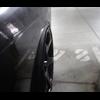Relocating Battery To Boot - Battery Mount
Announcements
-
Similar Content
-
Latest Posts
-
So....to find any R chassis part number, get your VIN (will be something like ER33-xxxxxx for you) and go to: https://www.amayama.com/en/genuine-catalogs/nissan and enter it. From there you have access to a web version of Nissan's part system, FAST. It is a bit tricky to get used to, so maybe have a shot and post up what you think. You can also search by general model but note in some cases your car might have different options so VIN is safest. On diagram 211 I got 14075-75T16 for Connector, Water Hose If I search for part 14053‑21U10 that you posted, that is also a water hose but not the one bolted to the plenum and 14075‑04U00 is the fitting where the water hose goes into the block.
-
Yeah now we are talking I much prefer coolers in the front middle because it lessens the chance of a small bump to a corner stopping the whole event. I was thinking the AT cooler can move out of the radiator, delete the AT/engine coolant interwarmer and mount a separate cooler with a thermoswitch somewhere further back as is common in racing, that would be one thing. Beyond that, the engine oil cooler is an obvious one to move to the wheel arch, potentially one on each side, but unused space is an issue. I did have a earlier pic with the bumper off but it doesn't show how busy the corners are: DS is full of the auto driving sensors and PS is totally fully of windscreen washer fluid reservoir But ultimately I was hoping to keep the AC, and the water/air heat exchanger is fundamental so it is not just the radiator that needs to be in front BTW here's airflow to the rad as it ran at the track (one horn is gone now and I'll remove the lights next time):
-
your right the maps for Australia came out in 2017 but are 2010 maps. i got the updated maps SD card put it in and it was the same. Same maps in my Brothers Nissan Patrol. 2020 i think his car is
-
Yeahhhh, the costs have killed me. Spent more than the cost of an engine rebuild and it most mostly servicing and a tune lol.
-







Recommended Posts
Create an account or sign in to comment
You need to be a member in order to leave a comment
Create an account
Sign up for a new account in our community. It's easy!
Register a new accountSign in
Already have an account? Sign in here.
Sign In Now